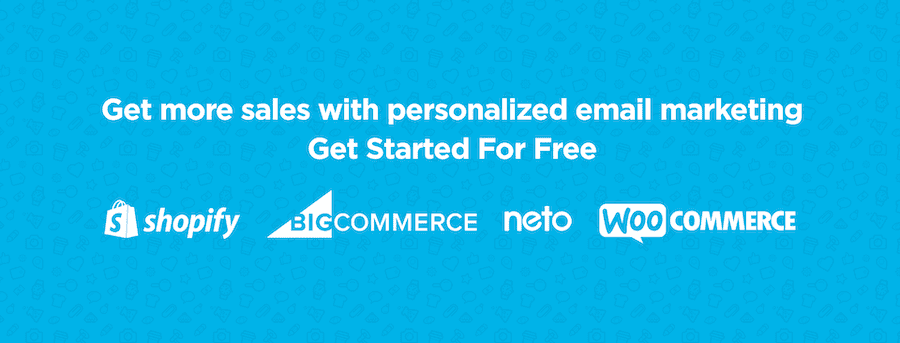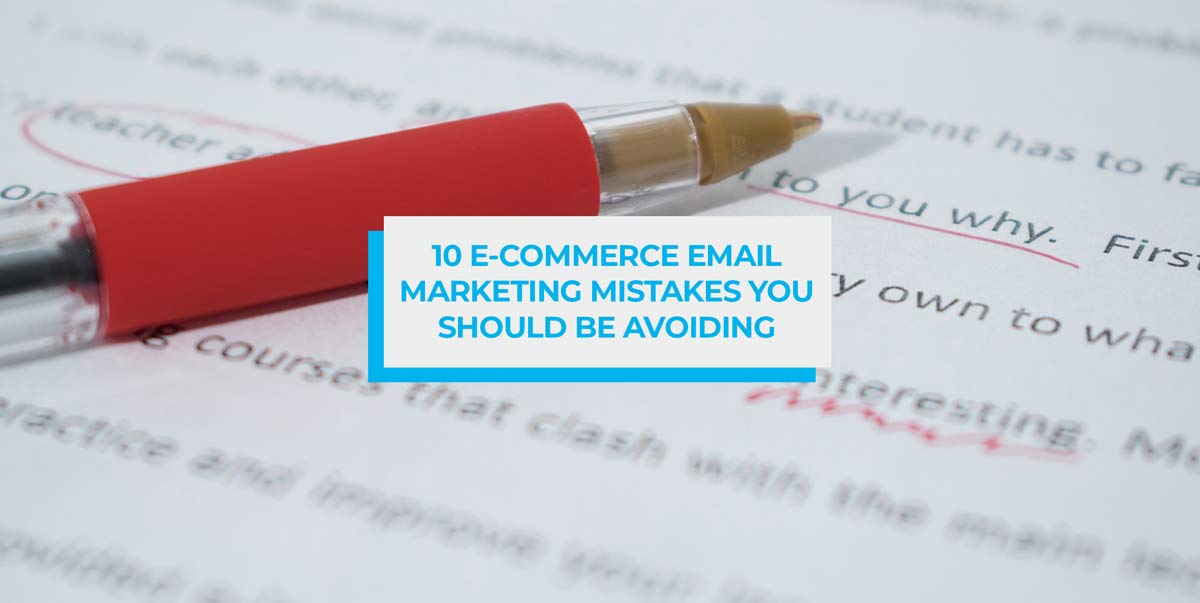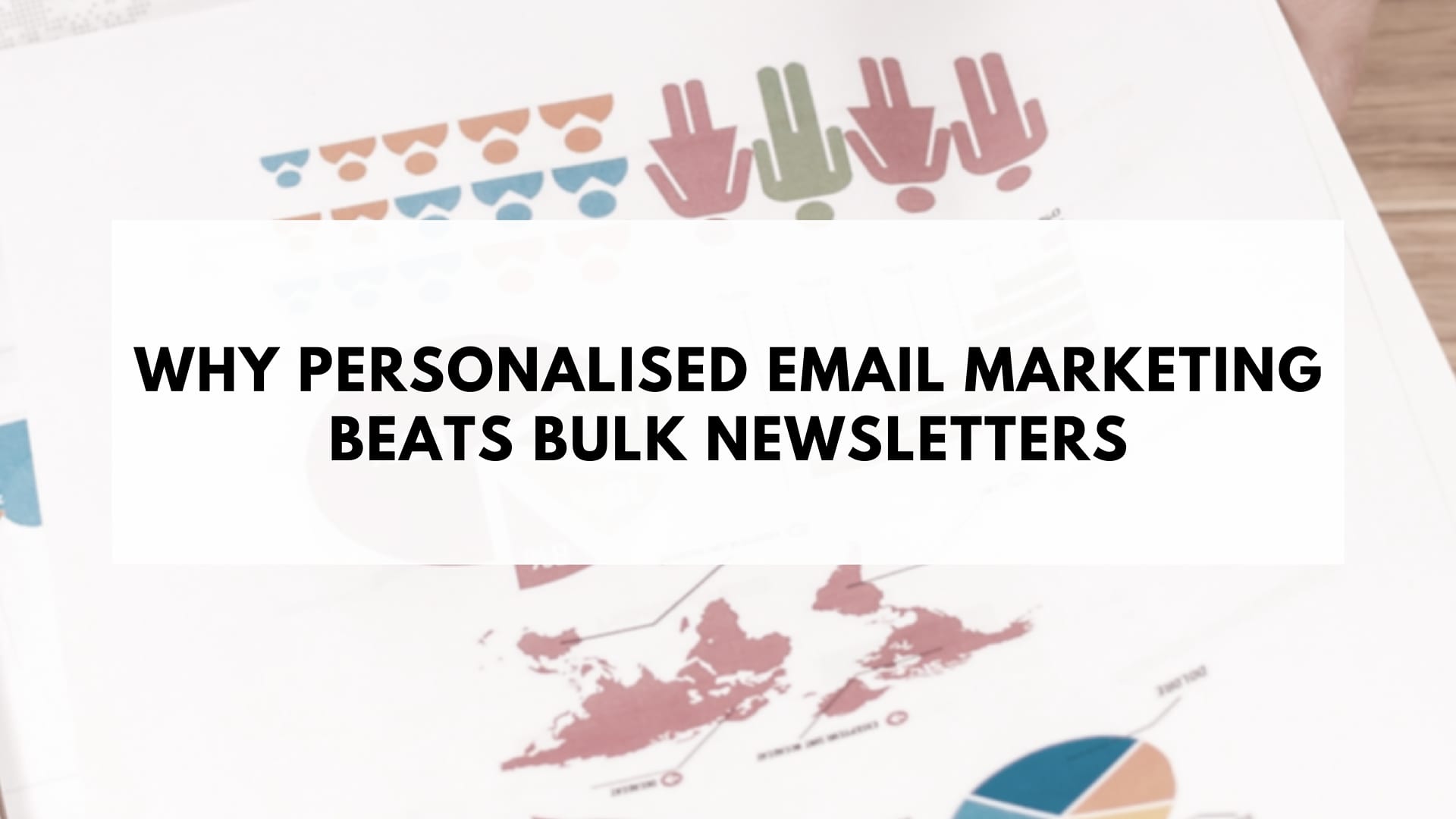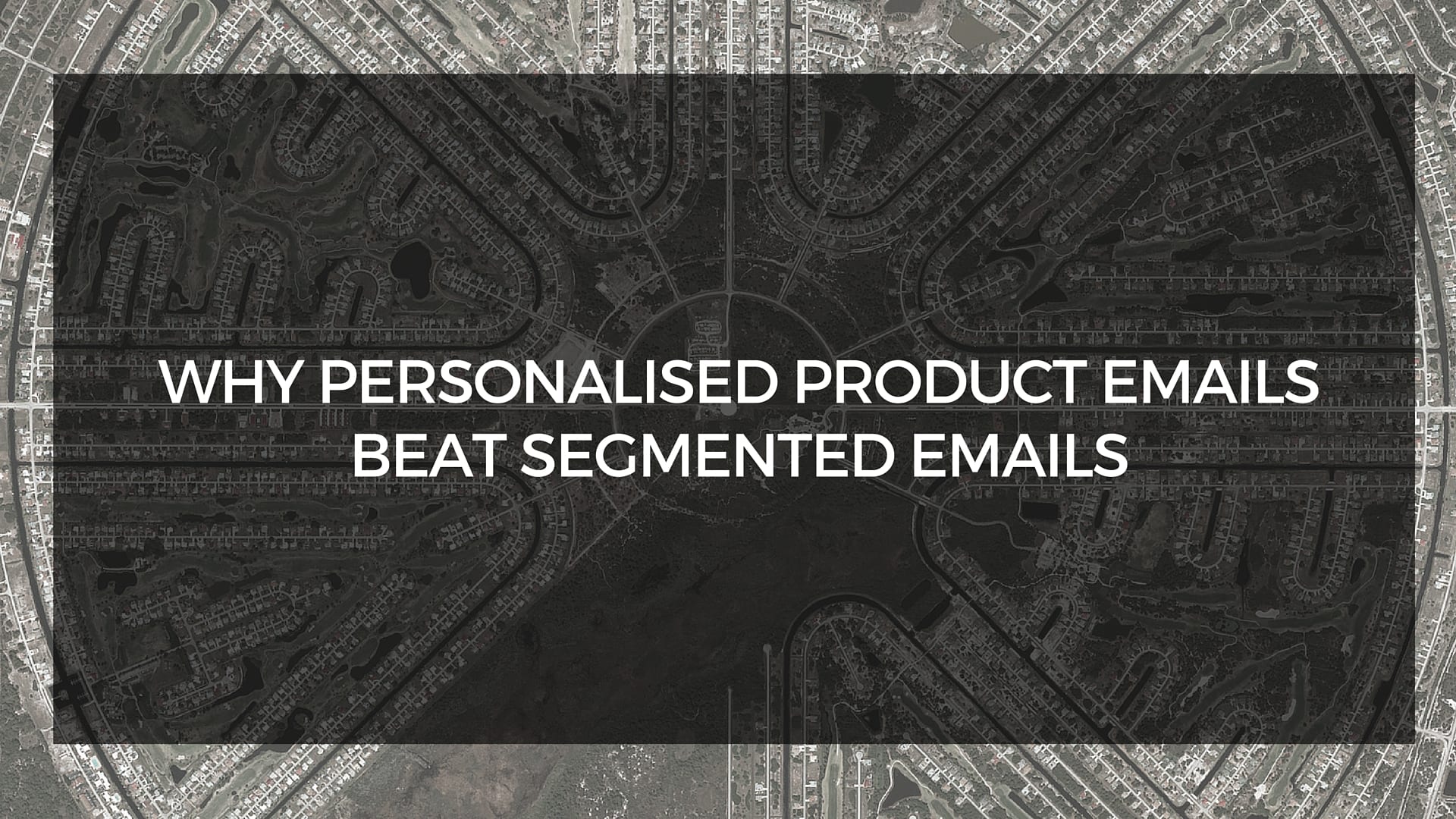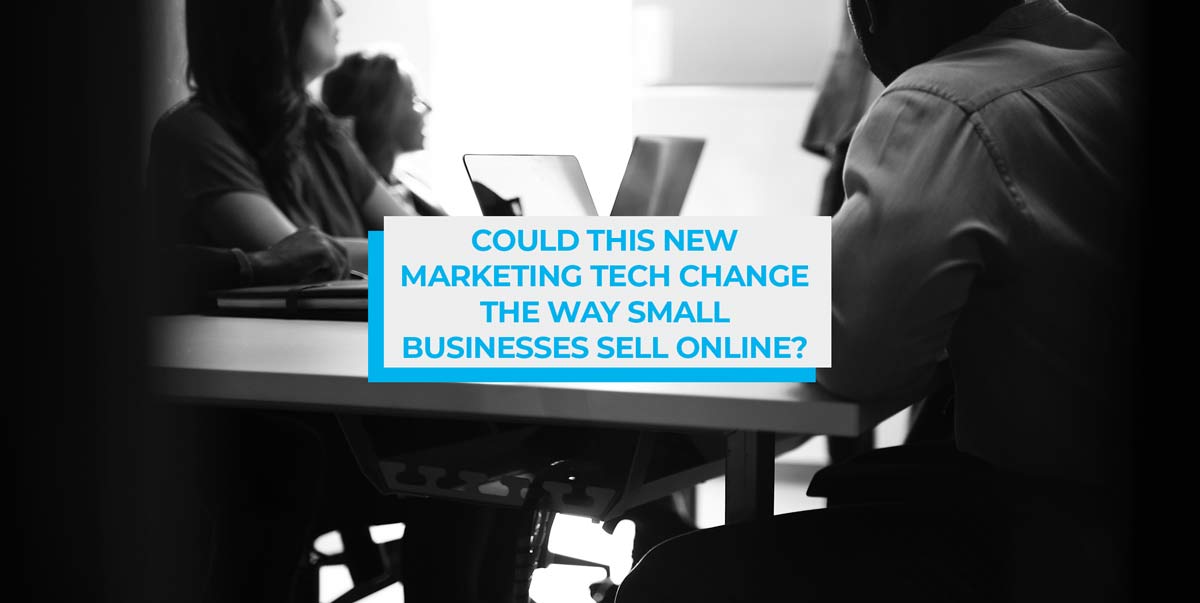Last year we shared a lot of best practice tips on this blog about how you can get the most out of your email marketing. We’ve covered everything from welcome emails to growing your email list to segmentation, and everything else in between. Along the way, we’ve given you plenty of advice on how to construct different types of emails, how to send them and who to send them to. We’re extremely happy to see that many stores are making use of these tips in their email marketing.
However, many email marketers out there, including some of you reading this, are still making costly mistakes that are impacting negatively on your email engagement rates. Let’s address what you might be doing wrong, and what you could be doing instead to improve your email marketing this year.
1. Not sending any emails
The biggest part of email marketing is, well, sending out emails. Yet many stores just don’t send out any emails at all. Kylie Cosmetics, I’m looking at you. After receiving a subscription confirmation email and a welcome email when I signed up for their newsletter in May this year, I haven’t actually been sent anything since. What’s the point of putting all that effort (and money) into getting people to sign up to your email list if you’re not going to send your subscribers anything?

If anyone can get away with giving the cold shoulder to their email list, it’s Kylie Jenner. But unless you’re a celebrity that can sell out your products in minutes regardless, you should definitely engage with your newsletter subscribers. By signing up to your email list, they’re expressing that they WANT to receive your newsletter – don’t keep them in the dark.
2. Not sending any welcome emails
Similarly, many stores don’t send out any welcome emails to their new subscribers. This is a missed opportunity to start off your relationship with your new subscriber on a good note, especially because this is the point where your subscriber is most engaged with your brand.
Having subscribed to dozens of different email lists, I’ve noticed that many stores will simply send out a subscription confirmation email before firing off their marketing newsletters. No ‘Thank you for signing up’ or ‘Welcome’ message or anything. This feels really impersonal, and doesn’t encourage brand loyalty; your new subscribers will just feel like you’re interested in making sales and not creating a personable customer experience.
On top of this, the engagement rate for welcome emails is much higher than regular bulk email newsletters. This is also reflected in high transaction rates; welcome emails see a 336% lift in transactions compared to regular marketing emails. So there’s really no reason not to incorporate a welcome series into your email marketing.
To learn how you can construct your own welcome email series, read our post on 3 Emails Every Ecommerce Store Needs In Their Welcomes Series. To see how Barnes & Noble has created an effective welcome series, read our Welcome Email Series Breakdown – Barnes & Noble post.
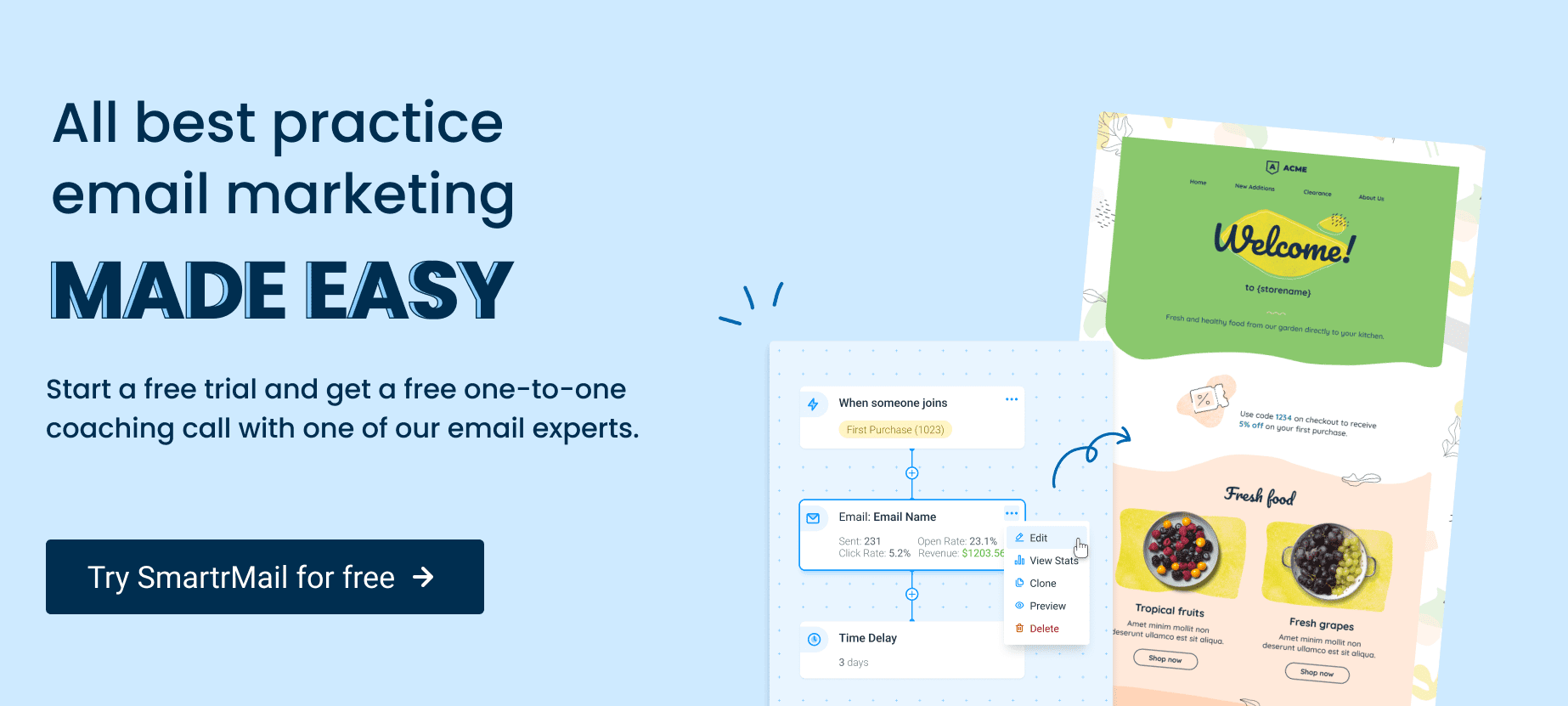
3. Sending too many emails
You’ve probably seen some great results from email marketing. Your natural instinct might be to send out more emails to drive more sales. However, sending your subscribers too many emails can be just as bad as not sending them anything.

While I definitely encourage you to regularly engage with your subscribers, it’s important to get the balance right. We’ve covered this topic before in our Should My Store Send Daily Emails? post, but there’s really no reason why you should be bombarding your subscribers with emails every day; you risk making potential customers unsubscribe and landing your emails in the dreaded spam folder.
Although I can’t give you a magic number as to how often you should send out your newsletters (it really depends on how often your customers purchase from your store), we’ve done a really comprehensive guide on How to Determine Your Store’s Optimal Email Frequency.
4. Sending from a no-reply or donotreply address
Personalization is something you should always be striving for in your marketing. Customer service is about creating a 1:1 shopping experience. While this has always been a challenge for ecommerce, which lacks the face-to-face interaction of traditional bricks-and-mortar shopping, there are a number of things you can do to personalize the online shopping experience for your customers.
However, sending out marketing emails from a no-reply or donotreply company address is NOT one of those things.

Not only does it feel cold and unwelcoming, it basically tells your subscribers that you’re not interested in hearing from them. Your subscribers might have questions regarding the content you’ve sent out to them. In this case, you want to make it as easy for them to contact you as possible. This means you should open the lines of communication; mention somewhere in your email footer that your subscribers can contact you directly via email, social media or over the phone.
5. Buying lists
When you’re first starting out, it might take a while for your ecommerce store to pick up business. In order to rapidly grow your customer base, you might be tempted to buy an email list. The more subscribers you have, the more marketing emails you can send out, meaning you’ll make more money, right? Not if you’ve bought an email list.
There are a number of reasons why you shouldn’t be doing this. First of all, your bought subscribers don’t know you and you don’t know anything about them; not only is this an invasion of privacy, but there’s no guarantee that these subscribers will even be interested in your products and might mark your emails as spam. The bought email list is also sure to include inactive email addresses, meaning a percentage of the list won’t even receive your emails. Many email service providers won’t allow you to use your bought email list anyway, meaning it’s just a waste of money. On top of this, buying an email list can be an even more expensive mistake if you’re slapped with a fine for violating CAN-SPAM laws.
Besides, there are so many other (less legally ambiguous) ways to easily and quickly grow your email list. Check out one of our past posts to learn 5 Steps to Supercharge Your Store’s Email List Growth.
6. Not cleaning your list
Over time, some of your subscribers will begin to lose interest in the email content you send them. With these inactive subscribers, you have two options: attempt to re-engage them back with email marketing, or clean your email list.
Keeping inactive subscribers in your list will only negatively impact your engagement and deliverability rates. Naturally, because your inactive subscribers aren’t reading your emails, the open, click-through and transaction rates of your campaigns will all decline. As unopened emails pile up in your subscribers’ inboxes, your sending reputation will drop, increasing the likelihood that your emails will be directed to the spam folder.
You might not want to say goodbye to previously active customers, but it’s important to let them go.
Sign-up to our newsletter and receive a 30% discount on your first 6 months with SmartrMail
7. Sending out bulk email newsletters
Remember what I said earlier about the importance of personalization in email marketing? Well sending out bulk email newsletters is the opposite of that. These types of marketing emails might have worked in the past, but personalizing your emails has become an imperative to stand out in your subscribers’ inboxes. Yet only 39% of marketers send their subscribers personalized content via email.
Personalized email marketing is better than sending out bulk email newsletters in every way; personalized emails have 29% higher unique open rates, 41% higher unique click rates, and 6 times higher transaction rates.
If you’re not going to implement personalization, at least make use of segmentation to send your subscribers targeted content that will be more relevant to them. That being said…
8. Poor segmentation
…many stores don’t do segmentation well. Take The Iconic for example. On the site, their email collection pop up asks for the visitors’ gender. Presumably, this is so that they can send relevant content to their female and male subscribers; asking information about your subscribers during the sign-up process provides you with valuable information that will allow you to effectively segment your list and send out relevant content.

Most of the time, they do send me content targeted at men. However, once in a while they’ll send me stuff that isn’t so relevant to me.

Additionally, gender segmentation is just the tip of the iceberg. While it might be effective, using information like user behaviour and purchase history will allow you to further personalize the content you’re sending out to your subscribers’ inboxes.
9. Creating emails that are too long
From writing all these blog posts on email marketing, I’ve noticed that many ecommerce stores (especially bigger ones) love sending really long email newsletters. Here’s an example from Culture Kings – be warned, it goes on for a while…

Took a while to scroll past it, right? Well subscribers probably wouldn’t appreciate receiving such a lengthy email either. Often stores’ emails will become really long as a result of just having too many calls to action; it’s like they’ve crammed 4 or 5 different emails marketing different products or offers into the one newsletter.

It’s important to keep your marketing emails clear and concise. If you have a few different products or offers to talk about, try sending multiple emails rather than one massive one. That way, your email won’t split focus. As a result, your subscriber will be able to more easily digest your email, meaning they will be more likely to follow through with the call to action of the email.
10. Creating image-heavy emails
Remember that really long email from Culture Kings? Here’s what it looks like with images disabled:

Not a lot going on, huh? Only 33% of email recipients have images turned on by default, so it’s important to keep this in mind when creating your newsletters. While they have made use of some alt text, the colour scheme of the Culture Kings makes it hard to read. Additionally, without their images, there is no way to know what the email is about, or even to click through to their site.
Meanwhile, even without any images, this email from Book Depository is still able to get its point across.

It’s important to include plain text if you’re going to create an image-heavy HTML email, so that your subscribers are still able to read your email if they have images disabled. It’s also important to include a link to your website in this case, as well as alt text for your images.
Conclusion
In past blog posts, we’ve provided you with a number of actionable best practice tips to help improve your email marketing. However it’s just as important to know what you shouldn’t do in order to make email marketing perfect. If you are currently making some of these email marketing mistakes, now’s your chance to start implementing one of the more effective strategies I’ve suggested instead.
